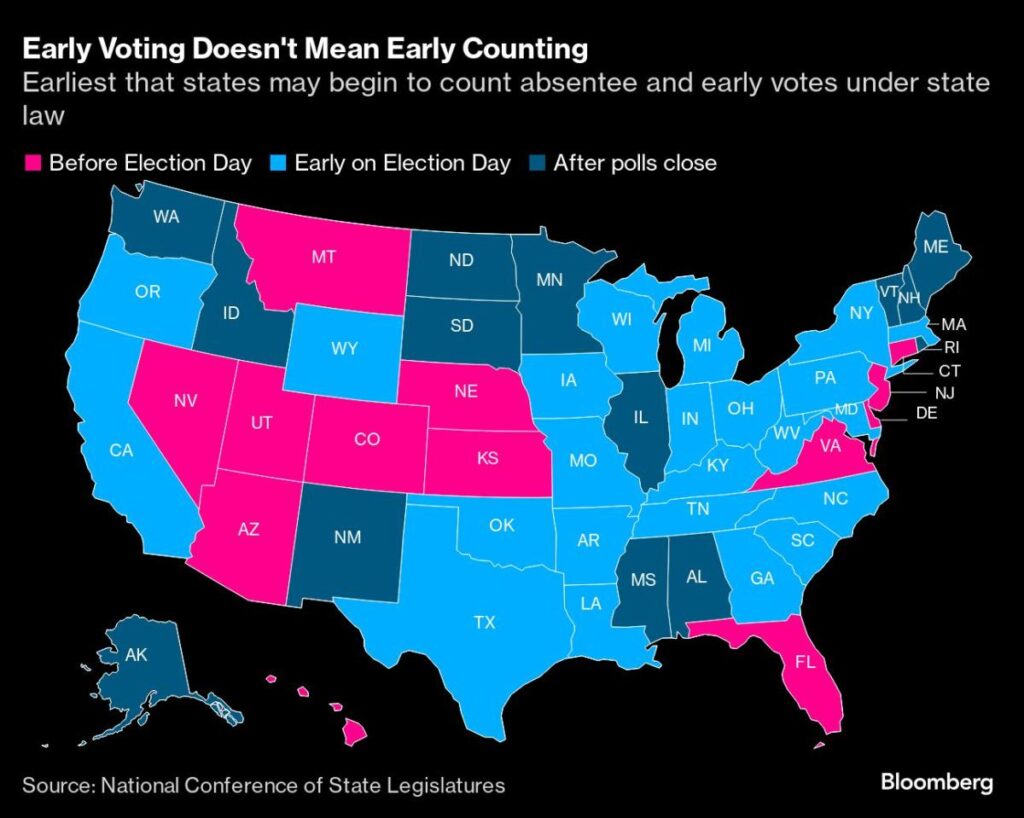As the polls closed across key states in the United States, early results indicated a hard-fought battle between Democratic candidate Kamala Harris and Republican Donald Trump. Initial outcomes showed Trump winning in several states, notably Florida and West Virginia, while Harris secured victories in predominantly Democratic areas such as Massachusetts and Maryland. The polls had closed in pivotal swing states like Georgia, North Carolina, Pennsylvania, and Michigan, with Arizona and Wisconsin soon to follow. Voters cited democracy and economic concerns as their primary issues, with 35% stating democracy was their top concern and 31% citing economic factors. This election is particularly significant due to its tumultuous nature, marking a possible turning point in U.S. politics.
In the realm of economic concerns, voters expressed deep anxiety over rising costs, particularly gas and housing, with nearly half indicating they were very concerned about these issues. This sentiment is underscored by a remarkably low approval rating for President Joe Biden at 41%, reflecting widespread dissatisfaction among the electorate. The intensity and polarization of this election are evident, as Democrats hope to mobilize female voters, particularly in light of the Supreme Court’s overturning of federal abortion rights, to counter Trump’s support among male voters.
As results began to come in, financial markets reacted positively, with futures on the S&P 500 and Bitcoin prices rising amidst speculation about a Trump victory. Trump himself demonstrated confidence while asking supporters to remain vigilant and ensure their votes were cast. In contrast, Harris engaged in various media outreach efforts before the polls closed. The potential delays in announcing the final results, fueled by a large number of mail-in ballots, raised concerns over possible legal challenges and unrest, reminiscent of the chaotic aftermath of the 2020 election.
Despite risks of unrest being echoed through the campaign trail, the day saw significant voter turnout, including among Latino communities in Pennsylvania. Challenges faced included bogus bomb threats in Georgia aimed at disrupting the vote. Yet, many officials reaffirmed the integrity of the voting process. Democrats sensed encouraging turnout in critical areas like Nevada, with officials noting impressive numbers, particularly among younger voters. The battle for control of Congress further escalated, with multiple races potentially impacting legislation and policy direction for the next administration.
Candidates Harris and Trump have positioned themselves starkly against each other, both personally and in policy. Trump advocates for a return to the presidency with ambitious plans that include significant deportations and an overhaul of federal governance, despite facing historical legal challenges. In contrast, Harris aims to reshape her narrative, advocating for progressive social policies while emphasizing her role as a stabilizing force against Trump’s perceived threats to democracy.
Amidst soaring campaign expenditures—expected to exceed $14.8 billion—both candidates faced the daunting reality of competing in key battlegrounds pivotal for a potential electoral victory. With Trump planning a traditional watch party at his Palm Beach headquarters and Harris set to observe results from her alma mater, the election reflects deep national divisions fueled by contrasting visions for America’s future. The outcome of this election has the potential to reshape American politics significantly, intensifying battles over governance, social issues, and economic policy for years to come.

